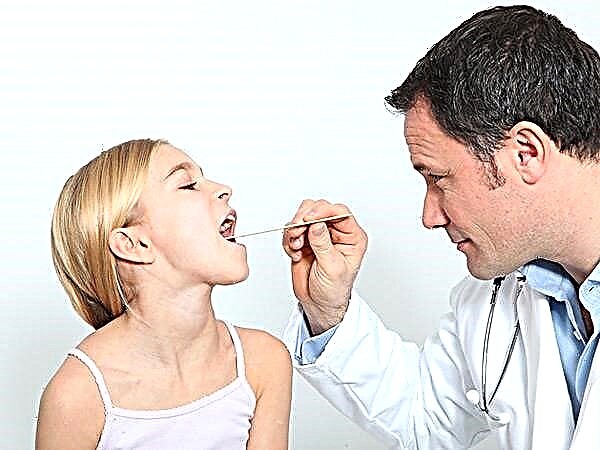
Skin pathologies cause severe discomfort in babies, they can manifest themselves in different ways. Only the right treatment will help to cure such diseases. Some parents have to deal with the problem associated with seborrhea of the scalp and face in children.
What it is?
A condition in which the sebaceous glands are disrupted is called seborrhea. It can occur in both children and adults. This pathology is characterized by a violation of the lipid balance of the skin. The prevalence of this disease is quite high.
Some experts also call this pathology seborrheic dermatitis.


In a healthy state, the sebaceous glands produce the required amount of secretion. It is quite oily and well distributed over all skin integuments. As a result of disturbances in the central nervous system, the course of this physiological process is disturbed. Ultimately, this contributes to the appearance in the child of unfavorable signs of the disease, which bring the child severe discomfort.
Dermatologists distinguish several clinical forms of the disease:
- Dry. Poor work of the sebaceous glands leads to the development of this form of the disease. Usually this variant of the disease occurs in newborns and babies in the first months of life. It is characterized by the appearance of a large number of scales on the skin, which are usually light gray or yellow.


- Bold. Occurs with excessive work of the sebaceous glands. On external examination, a large number of scales are noticeable, which are quite large in size and can stick to each other. The scalp becomes very oily and shiny. This symptom becomes very noticeable from the outside.
- Mixed. It is characterized by symptoms typical of dry and oily seborrhea. Can occur at any age.


Causes
A variety of reasons can lead to the development of the disease. Quite often it happens that the appearance of adverse symptoms provokes a combined effect of several causal factors at once. In such cases, the disease is usually more difficult to treat.
The appearance of symptoms provokes the influence of the following reasons:
- Increased hormonal levels. Usually occurs in the presence of certain endocrine pathologies in pregnant women. Violation of the synthesis of hormones in this case is also observed in the child - after his birth. Hormonal imbalance leads to the fact that the sebaceous glands begin to work inadequately.


- Heredity. Genetic predisposition also often contributes to the onset of uncomfortable symptoms. If the parents have signs of seborrhea, then the likelihood of such clinical signs in a child doubles. A predisposition to allergic pathologies also significantly increases the risk of developing this disease.
- Chronic pathologies of the gastrointestinal tract. Irritable bowel syndrome, occurring with stool disturbance and signs of dysbiosis, often leads to metabolic disorders in the body. Problems in the work of the gastrointestinal tract become the reasons for the appearance of various oily crusts or dry scales on the face. Quite often, this form of the disease is recorded in children aged 5-12 years.


- Postponed viral and bacterial infections. Many microorganisms have a pronounced toxic effect on the skin. Disruption of metabolic processes contributes to the disruption of the sebaceous glands.
- The active life of some fungi. A fairly common cause of the disease is the multiplication of the fungus Malassezia furfur on the skin. Usually, these microorganisms grow and develop on the scalp and lead to the appearance of a large number of skin flakes, also called dandruff. Most often, this variant of the disease occurs in boys 13-16 years old.


- Carrying out improper hygienic care of the baby. Excessive use of baby cosmetics (especially those that do not match the type of baby's skin) contributes to excessive dryness of the skin. Frequent overdrying also occurs as a result of the use of tar soap or detergents containing chemical additives.
- Violation of heat regulation. Quite often, this reason contributes to the development of seborrhea in babies (in the first year of life).
Excessive wrapping of the child leads to metabolic disorders, which is manifested by impaired work of the sebaceous glands.
- Strong stress. Exposure to pronounced psychoemotional factors leads to disruption of the central nervous system. Symptoms of seborrhea usually appear or worsen in children who often move from place to place, or in schoolchildren under significant stress at school.


- Unbalanced diet. The predominance of "fast" carbohydrates in the children's diet, which are found in large quantities in confectionery and various sweets, contributes to the development of various dermatological pathologies, including seborrhea. Insufficient intake of vitamins A and E into the body also causes disruption of the sebaceous glands in children.
- Excessive exposure to ultraviolet radiation. Prolonged sun exposure can lead to severe dryness of the skin. Excessive and prolonged sunbathing can have a negative effect on the functioning of the sebaceous glands.
- Use in daily care of cosmetic productscontaining alcohol. Usually teenagers abuse these funds. Alcohol, which is found in teenage and youth cosmetics, can severely dry the skin and lead to the development of signs of seborrhea.


Symptoms
You can also see the clinical signs of seborrhea at home. Parents usually notice that the skin of a child suffering from this disease becomes quite smooth and shines a lot. When examining the face, multiple blackheads are visible. They are usually located on the forehead, the wings of the nose, and on the chin. These formations are called comedones.
You can check the oily skin with a regular paper towel. To do this, touch it to the child's face. Only perform this procedure if there is no cream or lotion on your skin. Do not use toner or other cosmetic products on your face before performing this test. The appearance of greasy prints on a paper napkin indicates that the child has a pronounced oily skin.


In some cases, the surface of the skin becomes bumpy and is somewhat reminiscent of a citrus peel. The affected areas are called seborrheic elements or areas. They are usually located on the face, eyebrows, scalp, wings of the nose and neck.
Some clinical variants of seborrhea are accompanied by the appearance of adverse symptoms on the skin of the back and chest. The predominant localization of seborrheic areas is the upper half of the body.
You can check for the presence of pathological fatness of the skin with another simple method. To do this, slide your finger over the skin. If a bold print remains on it, then this indicates the presence of an increased fat content of the skin. At the same time, the skin begins to shine strongly.


To compensate for this condition, adolescent girls use a large amount of tonal means or powder, which only contributes to the progression of the disease.
Some situations are accompanied by the appearance of a fairly thick secretion, which is synthesized by the sebaceous glands. It mixes with skin scales, resulting in white flakes or dandruff. This symptom is a significant cosmetic problem, especially during adolescence. Frequent shampooing only provokes an increase in this adverse manifestation of the disease.
There are additional symptoms of seborrhea. They are not found in all cases, but they cause some discomfort in the child. These symptoms include increased sweating of the palms and feet, and in some cases, in the armpits.


In infants, hyperhidrosis manifests itself in the area of the inguinal folds. The increased moisture content of the skin leads to the fact that bacteria can easily penetrate into the affected area, which can cause secondary infection.
Treatment
Seborrhea has a chronic course. To correct the arisen metabolic disorders, the appointment of complex therapy is required. It is possible to cure an exacerbation of seborrhea, for this you need to take into account all medical recommendations. Many parents believe that they do not need to see a doctor to prescribe treatment, and they independently select a therapy regimen. This usually leads to an unstable positive result, which quickly disappears.


It is possible to treat seborrhea at home, but with mandatory control, which must be carried out by specialists. Dermatologists deal with problems associated with dermatological diseases. In some cases, additional tests and examinations are required before prescribing treatment. These diagnostic tests allow you to exclude fungal or infectious skin pathologies that occur with the development of such symptoms.
Quite often, this pathology goes away on its own. After puberty and the normalization of hormone levels, all adverse symptoms almost completely disappear.


If the child has concomitant chronic diseases of internal organs, treatment of these pathologies is mandatory. Improving the appearance of the skin is impossible in the presence of functional disorders in the intestine or with an exacerbation of endocrine disease.
Treatment for seborrhea includes:
- Normalization of the daily routine. Excessive physical exertion leading to severe fatigue is necessarily excluded from the child's daily schedule. A night's sleep is very important for the restoration of the nervous system. Its duration in babies should be at least 8 hours. Very young children should be sure to rest during the day.


- Compliance with a diet. In the children's diet, all confectionery and sweets are significantly limited. The consumption of fatty foods should also be limited. These include a variety of saturated fats, mayonnaise, lard, fatty pork and lamb, and goose pies. The child's nutrition should be fractional and include a sufficient amount of fermented milk products, fruits and vegetables.
- Reception of multivitamin complexes. The composition of these medicines must necessarily contain vitamins of group B. These biologically active substances have a beneficial effect on the skin, contributing to the normalization of the sebaceous glands. Some experts recommend taking brewer's yeast, which is high in essential vitamins.


- The use of gentle cosmetics. Shampoos containing antifungal ingredients can help remove dandruff. If your hair is oily, you should not wash your hair too often. Frequent washing will only contribute to increased fat content and will worsen the disease.
- Treatment of concomitant chronic diseases internal organs. Prevention of exacerbations of these pathologies helps to improve the general well-being of the child and reduce the manifestation of seborrhea in him.
- Consulting with a psychologist. They are prescribed for quite emotional babies, as well as children who have undergone recent stress. Classes with a specialist lead to the normalization of nervous activity, which has a positive effect on the well-being and appearance of the child.


- Strengthening the immune system. Vigorous exercise and proper nutrition have a positive effect on the functioning of the immune system. Strong immunity allows the child to quickly cope with various diseases. Daily walks in the fresh air have a positive effect on the appearance of the skin.
- Providing proper hygiene care behind the skin. Recommendations regarding such treatment should be obtained from a dermatologist - after a clinical examination of the skin. During such a study, the doctor will determine the type of skin, as well as make individual recommendations for daily care of problem areas.
For how seborrheic dermatitis manifests itself in infants, see the next video.



